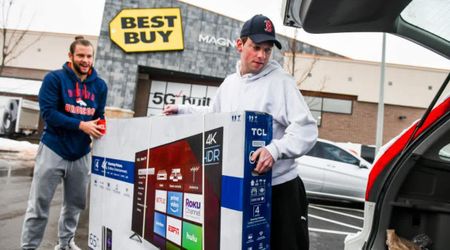An Ageing Workforce Means a Quarter of the Professionals in G7 Countries Will be Above 50 by 2030

Experience has been a major gamechanger for professionals apart from their qualifications, and as the job market becomes a more competitive space, things might get more intense with a higher proportion of the workforce emerging as experienced candidates. A recent study has unveiled a striking projection that by the year 2030, a remarkable 150 million jobs will transition to workers aged 55 and older. Conducted by Bain and Company, the study forecasts that individuals with greater experience will constitute over a quarter of the workforce by 2031, marking a significant transformation within the G7 nations.
Inflation Causing Many Older Workers to Postpone Retirement https://t.co/d8D8raJ4qT via @401kspecmag
— Aging Workforce News (@AgingWorkforce) March 14, 2022
Andrew Schwedel, a partner at Bain & Company, revealed that Japan is leading this trend, with nearly 40% of its workforce surpassing the age of 55. Europe and the United States are following closely behind, with figures ranging from 25 to 30%.
The phenomenon of an aging workforce is not new, particularly in countries like China and Germany, where declining fertility rates and extended education periods have led to a dwindling number of younger entrants into the workforce. Another contributing factor to such a workforce is retirees rejoining the workforce due to inflation and a robust job market.

In response to this shifting demographic, companies are urged to invest in targeted interventions to bolster their growth. Despite this imperative, a mere 4% of firms actively integrate older workers into their ranks. "Companies that invest in recruiting, retaining, reskilling, and respecting the strengths of this group will set themselves up for success as the demographics of the workforce continue to shift," Schwedel added.
He also emphasized the necessity of understanding the motivations of older workers, noting their preference for competitive compensation before retirement, and a shift towards seeking fulfilling roles thereafter.

In the United States, there's a noticeable deficit in training opportunities for older employees, which is why companies need to adopt a growth-oriented mindset which leads to active involvement of older workers in training initiatives. Programs such as the one initiated by Atos to address the skill gap among its 21,000 employees aged 50 and above, have shown promising outcomes.
Similarly, efforts by The Digital Skills Ready and Google.org to train 25,000 individuals aged 50 and above, particularly those from low-income backgrounds and minority groups, highlight the importance of inclusive training initiatives.
National Employ Older Workers Week recognizes the value that older workers bring to the workforce. With an estimated 10,000 adults turning 65 every day, retaining and recruiting older workers becomes increasingly important. Learn more: https://t.co/h0sBAanmxZ #NEOWW23 pic.twitter.com/99fTzWCHzS
— NIOSH (@NIOSH) September 27, 2023
To retain experienced workers, companies must create environments conducive to their optimal performance, including upskilling them in relevant technologies. Additionally, fostering a culture that values diverse talent and interests, can enhance engagement and productivity among older employees.
"For older workers to take advantage of training programs, companies need to design programs that appeal to their pursuit of interesting work and encourage supervisors to motivate participation across all age groups," Schwedel stated.
"Motivations are different by individual and they change throughout one’s career. That speaks to some of the different things that companies need to do if they’re trying to appeal to younger workers versus older workers," he added.
Age-related discrimination in the workplace is a pervasive issue that many individuals face. Creating roles that benefit both older workers and the company is not just the right thing to do, it’s also a business imperative.























